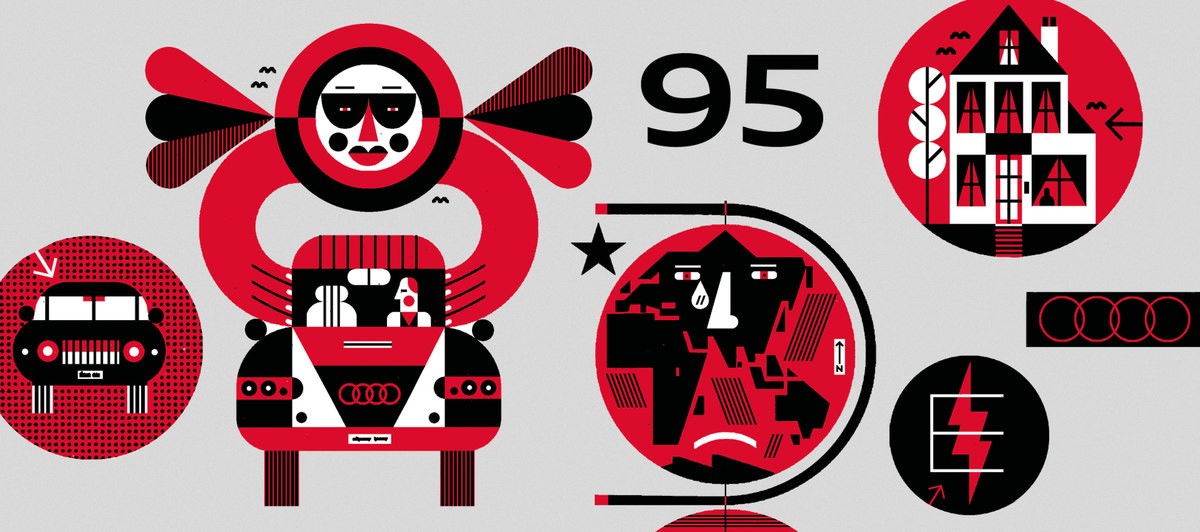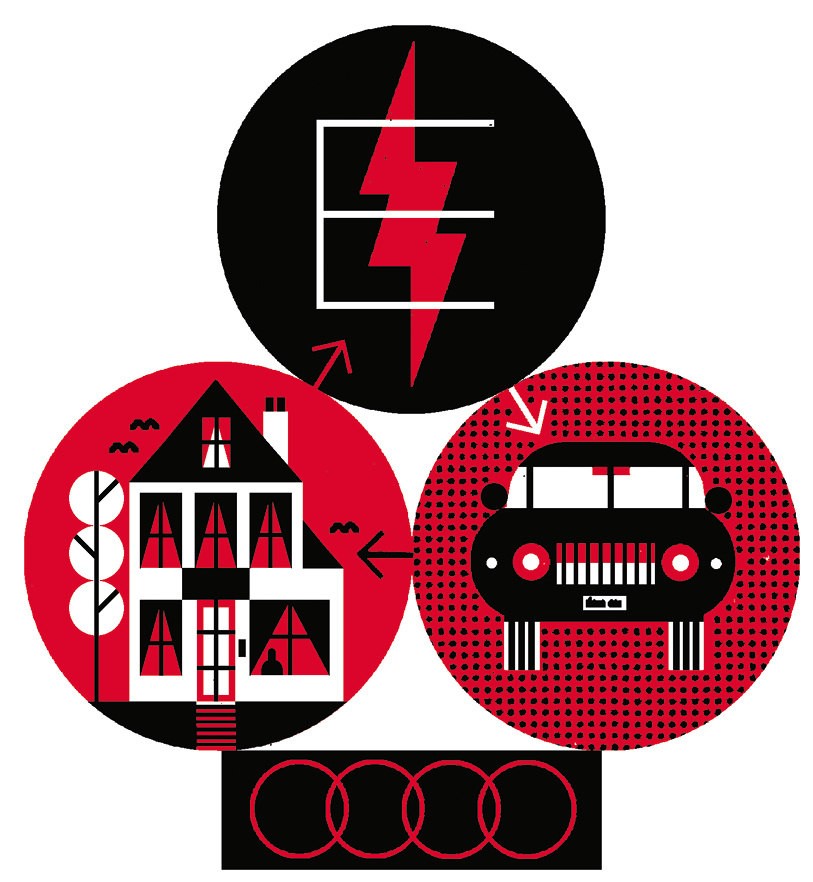
Energy surplus
Facts & Figures
By Raymond Biesinger (illustration)
Solar roof
Audi and photovoltaic specialist Alta Devices are collaborating to integrate glass lids with thin-film solar cells into the panoramic glass roofs of Audi electric cars. The power gained flows into the electrical system and is intended to significantly extend the vehicles’ range.

Why energy-plus?
Sustainable construction also plays a role in deciding the future of mankind. 0.8 °C: the increase in the average global temperature over the last 100 years. 9.8 billion: the world’s human population by 2050, according to forecasts. Approx. 40 yrs.: the potential time remaining until global oil reserves are exhausted. 60 percent: the share of the world’s waste that is generated by construction, demolition, etc.

percent of the greenhouse gas emissions that operations at the Audi plant in Brussels would generate with conventional sources of energy are avoided thanks to the use of renewable energies (green electricity and biogas certificates). The remaining emissions that are still produced due to the lack of technical and organizational alternatives are offset by compensation projects certified according to internationally recognized standards. In recognition of its efforts, Audi Brussels was awarded the CO2-Neutral label by Belgian certification organization Vinçotte.

Smart Energy Network
As part of a pilot project, Audi is connecting the home, car and electricity supply to create a smart energy network. This involves linking photovoltaic systems of houses to stationary battery storage devices. Interaction with the power grid is what sets the pilot project apart: An integrated interface links all the systems together to create a virtual power plant. Driven by the vision of emission-free premium mobility, Audi is developing services that will integrate the car seamlessly into a networked environment.